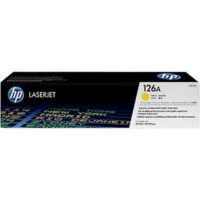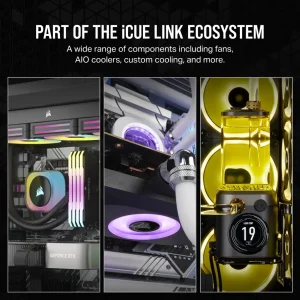Computers are ubiquitous, powering everything from personal gadgets to complex industrial systems. To understand how computers function, it is essential to know the basic hardware components that make up these machines. This comprehensive guide delves into the essential hardware components of a computer, explaining their functions, significance, and how they work together to form a cohesive system.
What is Computer Hardware?
Computer hardware refers to the physical components that make up a computer system. These components interact with each other to perform various computing tasks, from simple calculations to complex data processing. Unlike software, which consists of instructions telling the hardware what to do, hardware components are tangible parts you can physically touch and see.
Importance of Understanding Hardware
- Performance Optimisation: Knowing the functions and limitations of hardware components helps optimise a computer system’s performance.
- Troubleshooting: Understanding basic hardware components is crucial for diagnosing and fixing technical issues.
- Upgrading: Knowledge of hardware components is necessary for upgrading systems to meet evolving technological needs.
Basic Hardware Components
Central Processing Unit (CPU)
The Central Processing Unit (CPU) is often referred to as the “brain” of the computer. It executes instructions from programs, performing basic arithmetic, logic, control, and input/output operations.
- Cores: Modern CPUs have multiple cores, allowing them to process multiple tasks simultaneously.
- Clock Speed: Measured in gigahertz (GHz), the clock speed indicates how many cycles a CPU can perform per second.
- Cache Memory: A small amount of high-speed memory located inside the CPU, used to store frequently accessed data for quick retrieval.
The CPU performs calculations and processes instructions by fetching them from memory, decoding them, executing them, and then storing the results. This cycle, known as the instruction cycle, is the fundamental process by which a CPU operates.
Random Access Memory (RAM)
Random Access Memory (RAM) is a type of volatile memory that temporarily stores data and instructions that the CPU needs while performing tasks.
- Volatility: RAM loses its data when the computer is turned off.
- Speed: RAM is much faster than permanent storage devices like hard drives and SSDs.
- Capacity: The amount of RAM, measured in gigabytes (GB), determines how much data the CPU can store and access quickly.
RAM provides the CPU with a place to read and write data that it needs quickly. More RAM allows a computer to handle more tasks simultaneously, improving overall performance.
Motherboard
The motherboard is the main circuit board that connects all computer components. It houses the CPU, RAM, storage devices, and other peripherals.
- Chipset: A set of integrated circuits that manage data flow between the CPU, RAM, and other components.
- Expansion Slots: Slots that allow additional components like graphics cards, sound cards, and network cards to be added.
- Ports and Connectors: Interfaces for connecting external devices such as USB drives, monitors, and keyboards.
The motherboard is the central hub, allowing communication between all hardware components. It ensures that power is distributed to various computer parts and that data flows smoothly between the CPU, memory, and peripheral devices.
Storage Devices
Capacity: Storage devices are measured in gigabytes (GB) or terabytes (TB), indicating how much data they can hold.
Speed: SSDs are significantly faster than HDDs in terms of data access and transfer speeds.
Hard Disk Drives (HDDs)
An HDD is a traditional storage device that uses spinning magnetic disks to store data.
- Function: HDDs store large amounts of data permanently, even when the computer is turned off.
Solid State Drives (SSDs)
An SSD uses flash memory to store data, which makes it faster and more reliable than an HDD.
- Function: SSDs provide quicker data access and improved performance over HDDs, especially for tasks like booting up the operating system and loading applications.
Power Supply Unit (PSU)
The Power Supply Unit (PSU) converts electrical power from an outlet into usable power for the computer’s components. It provides the system’s required voltages and currents.
- Wattage: The power the PSU can supply is measured in watts (W).
- Efficiency: Higher-efficiency PSUs generate less heat and use less power, and they are often rated by standards such as 80 PLUS.
The PSU distributes power to all the computer components, ensuring that each part receives the correct voltage and current. A reliable PSU is crucial for system stability and longevity.
Graphics Processing Unit (GPU)
The Graphics Processing Unit (GPU) is a specialised processor that handles graphics rendering and image processing tasks.
- Cores: GPUs have thousands of smaller cores designed for parallel processing.
- VRAM: Video RAM (VRAM) is the memory used by the GPU to store image data.
The GPU accelerates rendering images, videos, and animations, improving performance in graphics-intensive applications such as gaming, video editing, and 3D rendering.
Input and Output Devices
- Keyboard: Allows users to input text and commands.
- Mouse: Enables users to interact with the computer’s graphical user interface (GUI).
- Monitor: Displays visual output from the computer.
- Printer: Produces physical copies of digital documents.
Cooling Systems
- Air Cooling: Uses fans and heat sinks to dissipate heat from components.
- Liquid Cooling: Uses liquid coolant circulated through a system of pipes and radiators to remove heat.
Cooling systems prevent overheating by dissipating heat generated by the CPU, GPU, and other components. Effective cooling is essential for maintaining performance and preventing hardware damage.
Interactions Between Hardware Components
- Data Flow: The CPU processes data fetched from RAM and storage devices, while the motherboard facilitates communication between all components.
- Power Distribution: The PSU ensures all components receive the necessary power to function.
- Cooling: The cooling system maintains optimal operating temperatures, preventing thermal throttling and hardware failure.
Performance Optimisation
Balancing the performance and compatibility of basic hardware components is crucial for building an efficient and reliable computer system. Upgrading individual components, such as increasing RAM or switching to an SSD, can significantly improve overall system performance.
Future Trends in Computer Hardware
- Miniaturisation and Efficiency: Advancements in technology continue to drive the miniaturisation of basic hardware components, leading to more compact and energy-efficient systems.
- Integration of AI and Machine Learning: Future hardware developments will increasingly integrate AI and machine learning capabilities, enhancing performance and enabling new applications.
- Enhanced Connectivity: Improvements in connectivity standards, such as USB-C and Thunderbolt, will offer faster data transfer speeds and greater versatility in peripheral connections.
Contact Bonolo Online for details
Please contact us for assistance with any questions about basic hardware components.




Leave a comment